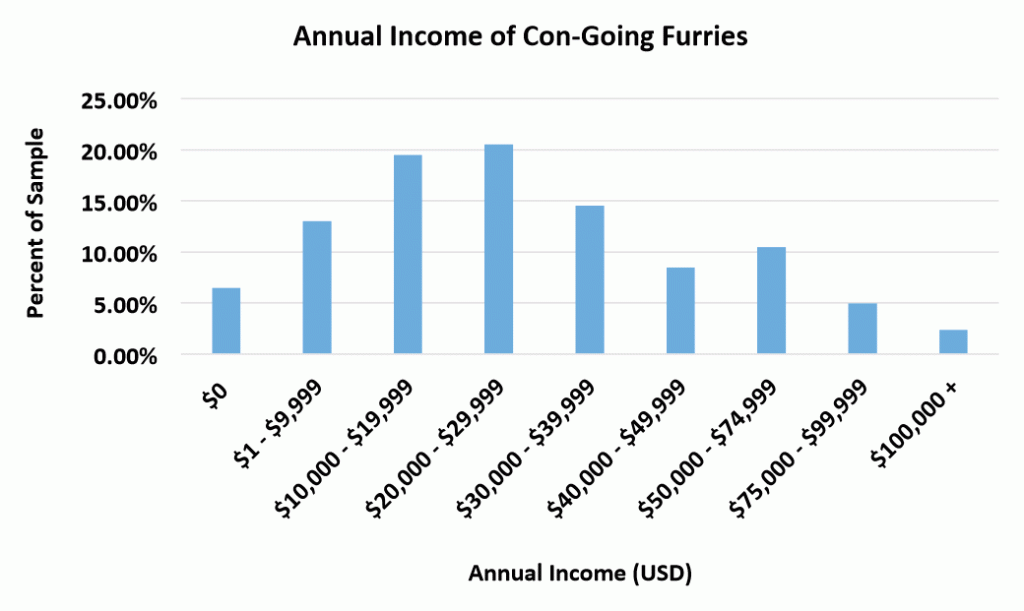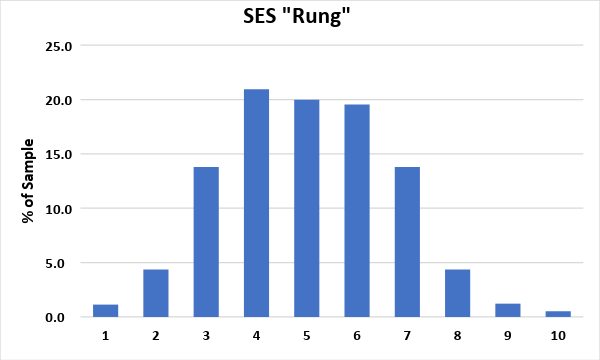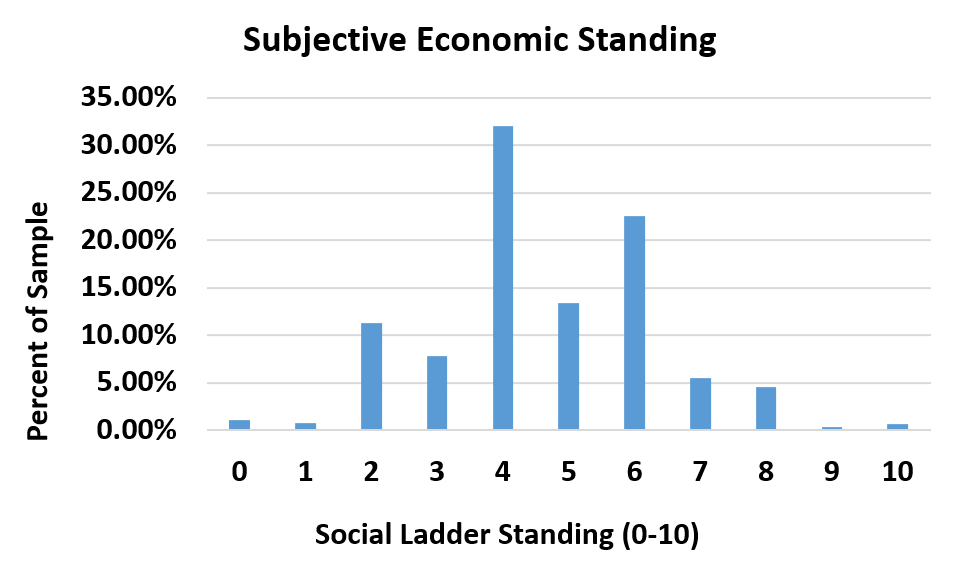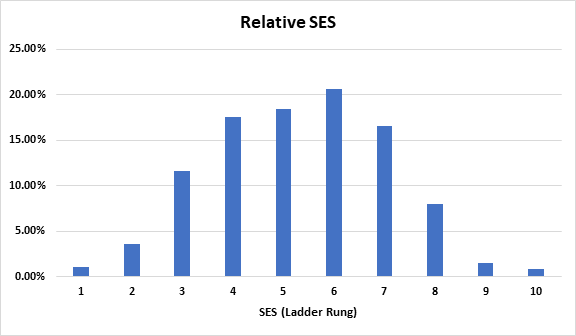On average, furries earn an annual income that does not differ significantly from that of a sample of the general American population (furries: $31,772 USD, non-furries: $31,470 USD).1 When broken down by income bracket, the data in the figure below illustrate that more than half of furries earned less than $30,000 USD per year, and about 6% of furries had no annual income at all. To compare, 7.5% of furries earned more than $75,000 USD per year. 2 These particular samples are based on Anthrocon attendees, who presumably had the resources to attend a convention (which usually includes, travel, hotel, and admission costs), meaning furries who were unable to attend the con for financial reasons were not represented (and, to date, we do not have income information of a non-convention sample of furries). As such, it is likely that the number of low-income furries is higher than what is shown here, due, in no small part, to the fact that many furries are in college and are, as a group, relatively young. In future studies we plan to compare the income of convention-going furries with that of online furry samples, with an interest in testing the possible restricting impact that income may have on convention attendance and other forms of fandom participation (e.g., purchasing a fursuit, going to local meet-ups).
Other studies have looked beyond objective income to assess participants’ subjective income level. Furries were shown a picture of a ladder with 10 rungs and asked to indicate which of the rungs best represented their financial standing relative to others in their culture. Being higher on the ladder indicated doing better off than most people in one’s culture, whereas being lower on the ladder indicated that one felt worse off than most people in their culture. Furries, as a group, placed themselves in or near the middle of that scale,3 with perhaps a slight tendency toward the lower end of the scale, suggesting that many furries consider themselves somewhat worse off financially than other members of their society, earned income levels aside. This makes sense in conjunction with our prior findings showing that furries, as a group, tend to be fairly young (in their late teens and 20s) and tend to be either in college or recently graduated from college.4
References
- Anthrocon 2012 and IARP 2-Year Summary
- Anthrocon 2015, Artist Survey, and Post-Con Depression Study
- Anthrocon 2016 Study, Anthrocon 2018 Study, Summer 2020 Survey
- See 1.1 Age and Ageism, 1.4 Education





Where do most furries see where their families come from in regards to ses?
im not very sure
Furscience team – I’d love to see this data compared against sense of belonging in the community! I too often see people complaining that you don’t get to belong as well if you don’t have/can’t afford a suit, and at that rate, a more expensive/’nicer’ one. I do also see folks, though, who feel that having a suit at all – even a rough homemade one for cheap – remedies that. Does having more money to commission suits and art make people feel like they belong more in the fandom?
I’m not sure if we have nay data on this specific question:
…if not, it may make an interesting research question for future surveys. I’ll pass it on to the Survey Methods Team 🙂
Thank you so much, actually. These demographics are super interesting to see!
Thank you 🙂